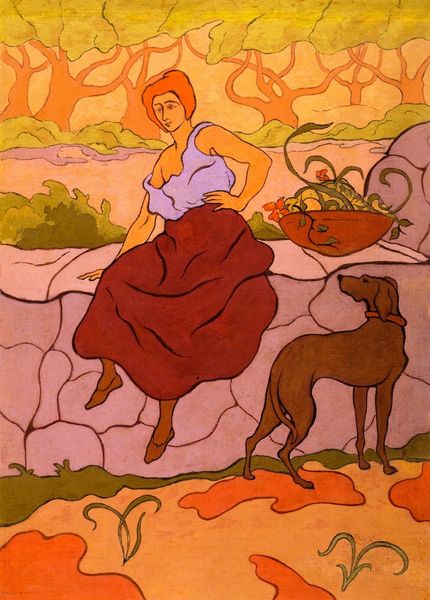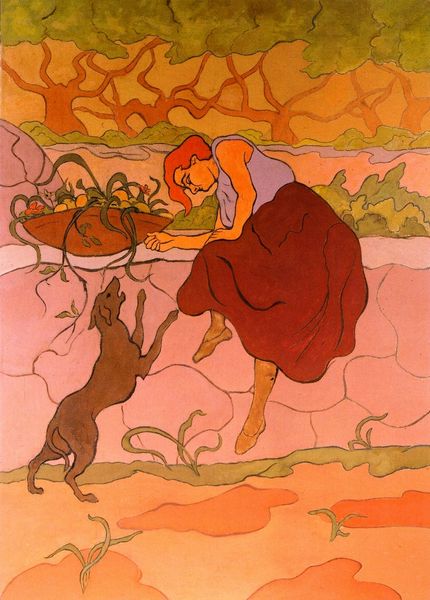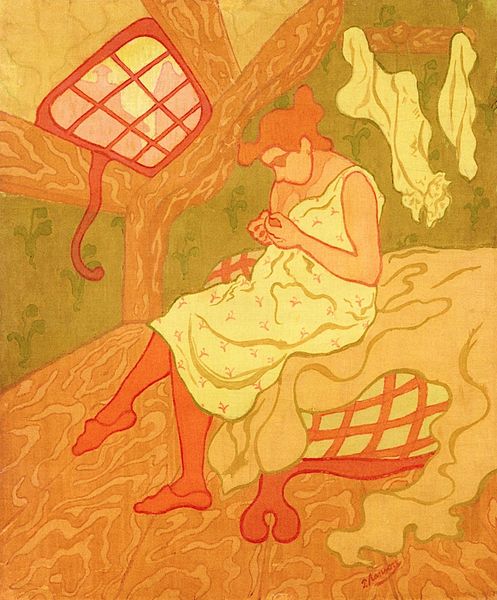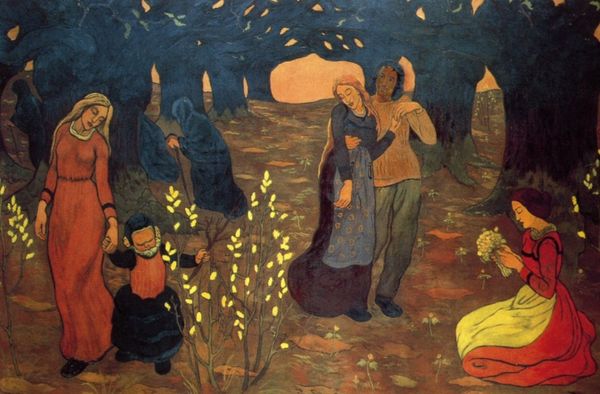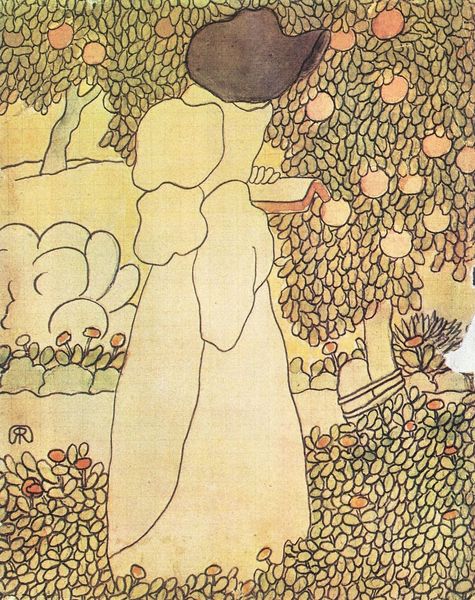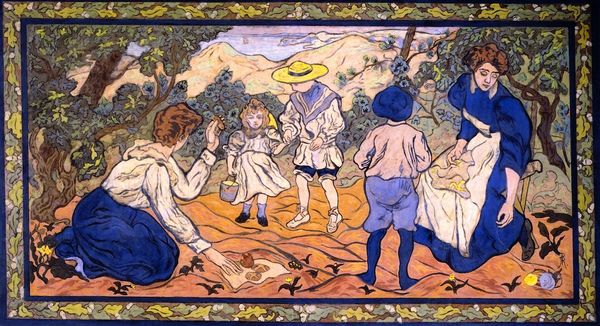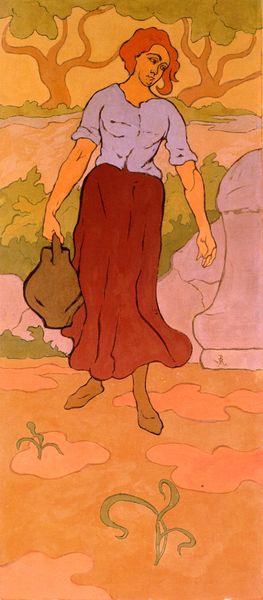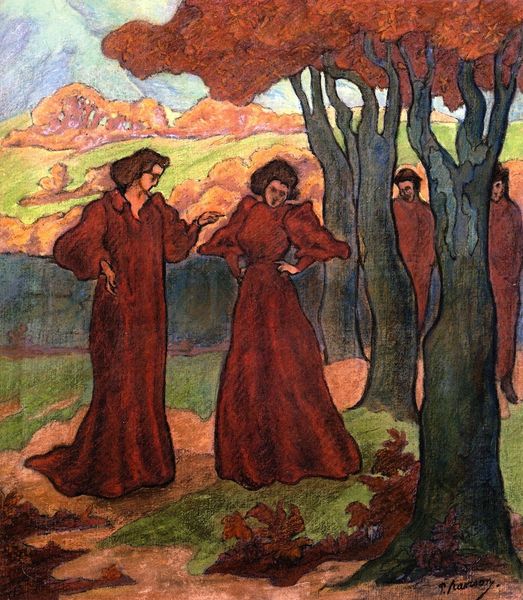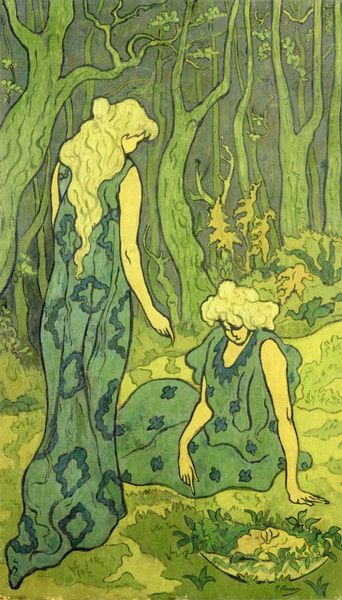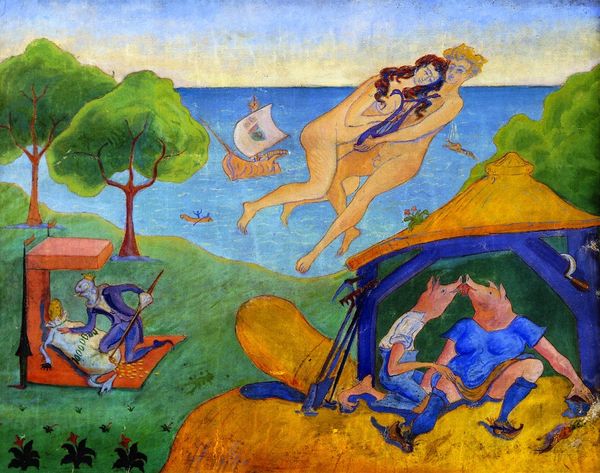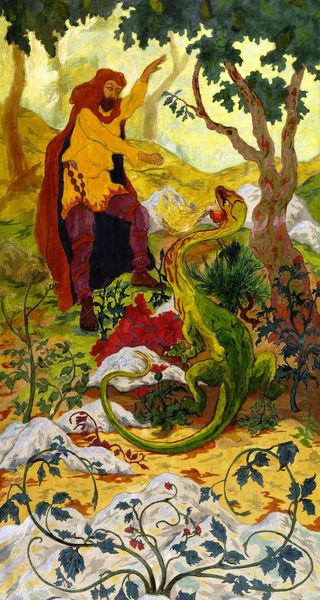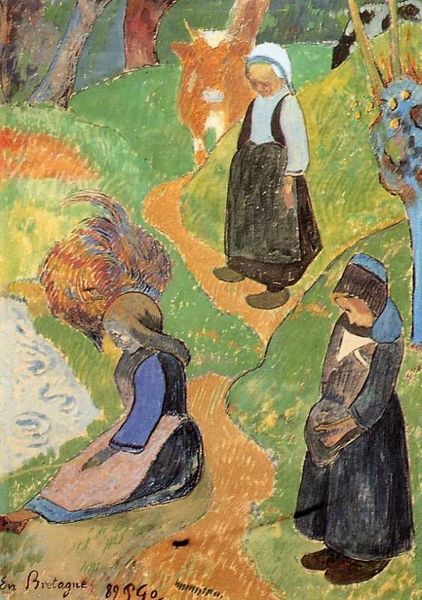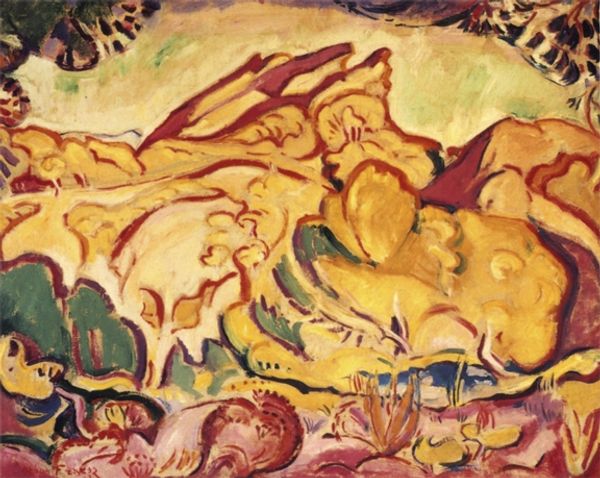
painting, gouache
#
fauvism
#
painting
#
gouache
#
landscape
#
figuration
#
handmade artwork painting
#
symbolism
#
genre-painting
Copyright: Public domain
Curator: This untitled gouache painting, by Paul Ranson, presents a series of women working in a landscape. The precise date remains unknown. Editor: It has this feeling of hazy summer heat, doesn’t it? And I’m immediately struck by the very stylized rendering of the women and landscape; almost like looking at a tapestry design, where each figure feels deliberately placed. Curator: Precisely. It’s tempting to delve into the symbolism that Ranson, associated with the Nabis, employed so deftly. Consider the positioning of these women. They aren’t simply laboring, are they? Editor: No, there's something ceremonial about the arrangement, especially the repeated forms, reminiscent of the ways labor and craftsmanship was venerated through tapestries or woven hangings designed for bourgeois households. Is this genre scene infused with allegorical weight? Curator: Possibly so. The figures, rendered with almost classical drapery, seem caught between earthly labor and some more profound ritual. The baskets of produce…are they mere sustenance, or symbols of a bountiful harvest, an offering? We might interpret them as bearers of the Earth's abundance, almost priestesses tending to the natural world. Editor: Interesting. I was considering the application of the gouache; notice how Ranson used the material to achieve that feeling of flatness in the visual field. There’s a simplification of form, almost bordering on abstraction; everything becomes unified through the handmade, almost deliberately rough application. It subverts any conventional idea of high art. Curator: Indeed. And if you let your eye wander through the work, notice the emotional temperature that is conveyed despite the static positioning of the subjects in the scene, inviting one to wonder if they speak to anxieties or expectations regarding labor and domesticity in turn-of-the-century France. Editor: Ultimately, there's a power here derived from material directness. Curator: And perhaps the image serves as a commentary on tradition, memory and identity, embedded in Ranson's arrangement and use of symbolic imagery.
Comments
No comments
Be the first to comment and join the conversation on the ultimate creative platform.
